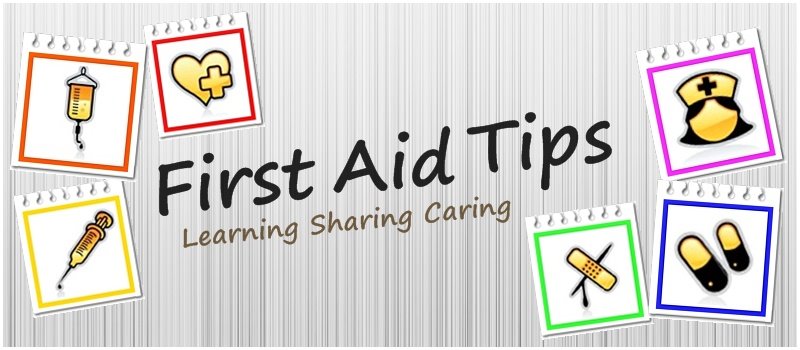Let starts with the simple circumstances that commonly happen among the students. For example, you may too actively involve in any kind of sports and often you may get scrape on your knee or other part of your skin due to fall down, or you were cutting carrots for dinner and you've sliced your thumb, or perhaps even a piece of paper will sharp enough too cut you skin.
First Aid Treatment:
1. The first thing is to make sure that your wound is clean. Infection can develop when a wound is contaminated with dirt and bacteria.
2. Run over tap water and little bit of soap or diluted dettol. You don't have to use a lot of friction unless there's a lot of dirt in the wound.
3. Application of agents, such as alcohol, iodine, and hydrogen peroxide are not recommended. These agents can damage tissue and decrease the recover rate.
4. Once it's clean, make sure that the bleeding is stopped. If not, apply direct pressure to the spot by using clean and dry cloth until the bleeding totally stops.
5. Apply right size adhesive bandage on the wound after clean and dry.
6. Actually do not necessarily need to use an antibiotic ointment or antiseptic cream for small wound. Your body does a great job of healing itself.
7. Make sure to change that bandage daily for hygiene purpose.
References:
M. H. Beers, A.J. Fletcher, T V. Jones, R. Porter, J. L. Kaplan. 2003. The Merck Manual of Medical Information 2th home edition. Merck & Co., Inc.
First Aid Treatment:
1. The first thing is to make sure that your wound is clean. Infection can develop when a wound is contaminated with dirt and bacteria.
2. Run over tap water and little bit of soap or diluted dettol. You don't have to use a lot of friction unless there's a lot of dirt in the wound.
3. Application of agents, such as alcohol, iodine, and hydrogen peroxide are not recommended. These agents can damage tissue and decrease the recover rate.
4. Once it's clean, make sure that the bleeding is stopped. If not, apply direct pressure to the spot by using clean and dry cloth until the bleeding totally stops.
5. Apply right size adhesive bandage on the wound after clean and dry.
6. Actually do not necessarily need to use an antibiotic ointment or antiseptic cream for small wound. Your body does a great job of healing itself.
7. Make sure to change that bandage daily for hygiene purpose.
References:
M. H. Beers, A.J. Fletcher, T V. Jones, R. Porter, J. L. Kaplan. 2003. The Merck Manual of Medical Information 2th home edition. Merck & Co., Inc.



No comments:
Post a Comment